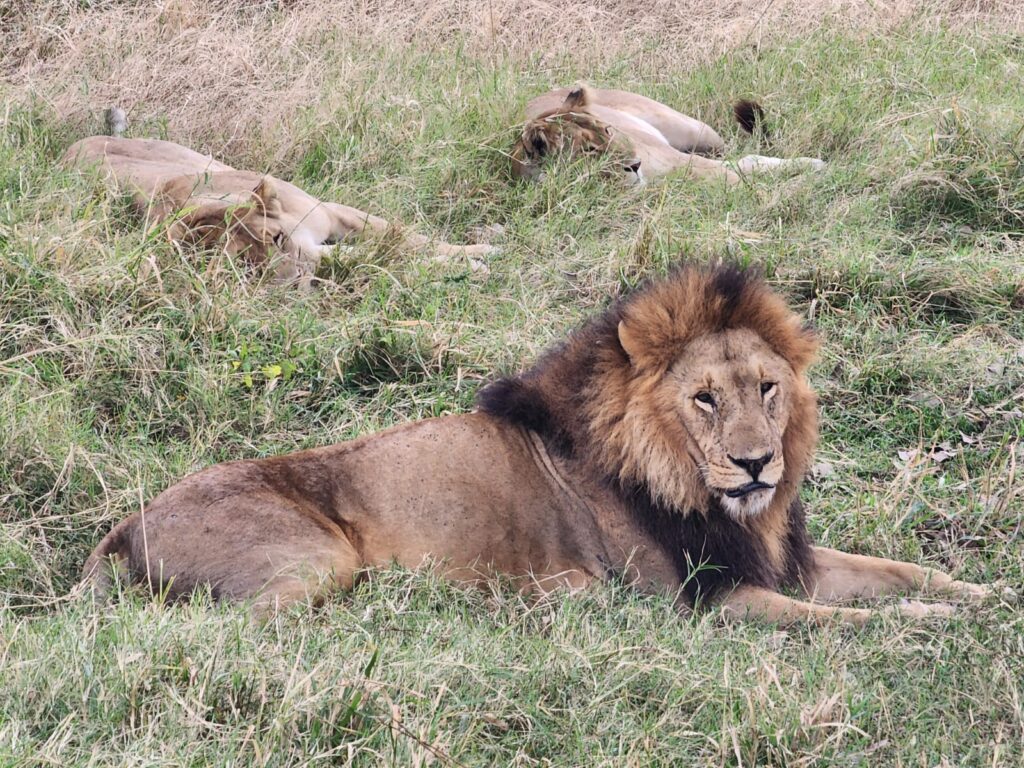Kenya’s big five are actually the world’s big five.
The “Big Five” refers to a group of large African mammals that are considered the most challenging to hunt on foot. Originally coined by trophy hunters due to the difficulty and danger involved in pursuing these animals, the Big Five have become a symbol of African wildlife. These magnificent creatures are not only found in Kenya but across the continent, though Kenya’s national parks, reserves, and conservancies are some of the best places to witness them.
Here’s an overview of where to see each of them and what makes each one special;
1. African Elephant
Description: The African elephant is the largest land animal in the world. Known for its intelligence and strong social bonds, elephants are often seen in family groups led by a matriarch. Male elephants, however, tend to lead more solitary lives.
- Where to See Them:
- Amboseli National Park: Known for its large herds and stunning backdrop of Mount Kilimanjaro.
- Samburu National Reserve: Features smaller, less frequently seen herds in a drier, more rugged environment.
- Tsavo National Parks (East and West): Home to some of the largest elephant herds in Kenya.
- What Makes Them Special:
- Size and Intelligence: The African elephant is the largest land animal, known for its impressive size and high intelligence. Their social structures, memory, and emotional depth make them particularly fascinating.
2. Leopard
Description: Leopards are elusive and solitary animals, known for their nocturnal hunting and excellent camouflage during the day. They are the smallest of the Big Five.
- Where to See Them:
- Maasai Mara National Reserve: Offers some of the best chances to spot leopards due to the abundance of prey and suitable habitats.
- Samburu National Reserve: Also provides good leopard sightings, especially during the cooler parts of the day.
- What Makes Them Special:
- Elusive Nature: Leopards are known for their elusive behavior and excellent camouflage, making them a challenging but rewarding animal to spot. They are solitary and nocturnal, which adds to their mystique.
3. Lion
Description: The lion, often referred to as the “King of the Jungle,” is one of the most iconic and feared predators on Earth. Lions are social animals that live in groups called prides, which can number up to twelve members or more. They are known for their power, strength, and collaborative hunting tactics.
- Where to See Them:
- Maasai Mara National Reserve: Known for its large prides and dramatic predator-prey interactions, especially during the Great Migration.
- Amboseli National Park: Offers sightings of prides with the iconic backdrop of Mount Kilimanjaro.
- Tsavo National Parks: Both parks offer opportunities to see lions in a variety of landscapes.
- What Makes Them Special:
- Social Structure: Lions are unique among big cats for their social nature, living in prides. Their cooperative hunting and complex social bonds are key aspects of their behavior.
4. Rhino
Description: Rhinos are divided into two species in Africa: white rhinos and black rhinos. They are critically endangered, with conservation efforts focused on protecting these magnificent animals.
- Where to See Them:
- Nairobi National Park: Features a sanctuary for orphaned rhinos and is a prime spot for rhino conservation.
- Ol Pejeta Conservancy: Known for its efforts in rhino conservation, including the protection of the critically endangered northern white rhino.
- Lake Nakuru National Park: A haven for both white and black rhinos, offering a critical sanctuary for these endangered species.
- What Makes Them Special:
- Conservation Status: Rhinos are critically endangered, making conservation efforts crucial. Their large size and distinctive horns are iconic, but their dwindling numbers make each sighting particularly significant.
5. African Buffalo
Description: The African buffalo, often considered the most dangerous of the Big Five, is known for its unpredictable and aggressive nature, particularly when threatened. These powerful animals are usually found in herds, but solitary males can be particularly dangerous.
- Where to See Them:
- Lewa Wildlife Conservancy: Provides opportunities to see buffalo in a relatively controlled environment focused on conservation.
- Maasai Mara National Reserve: Offers sightings of buffalo herds, often in close proximity to other Big Five members.
- Lake Nakuru National Park: Features buffaloes as part of its diverse wildlife.
- What Makes Them Special:
- Aggressive Behavior: Buffaloes are known for their unpredictable and aggressive nature, particularly when they feel threatened. They are often considered the most dangerous of the Big Five due to their ability to defend themselves fiercely.
Each of Kenya’s Big Five species offers unique experiences and insights into the rich biodiversity of the region. Their presence in Kenya’s various parks and reserves underscores the country’s importance as a wildlife conservation hub and a premier destination for safaris.

